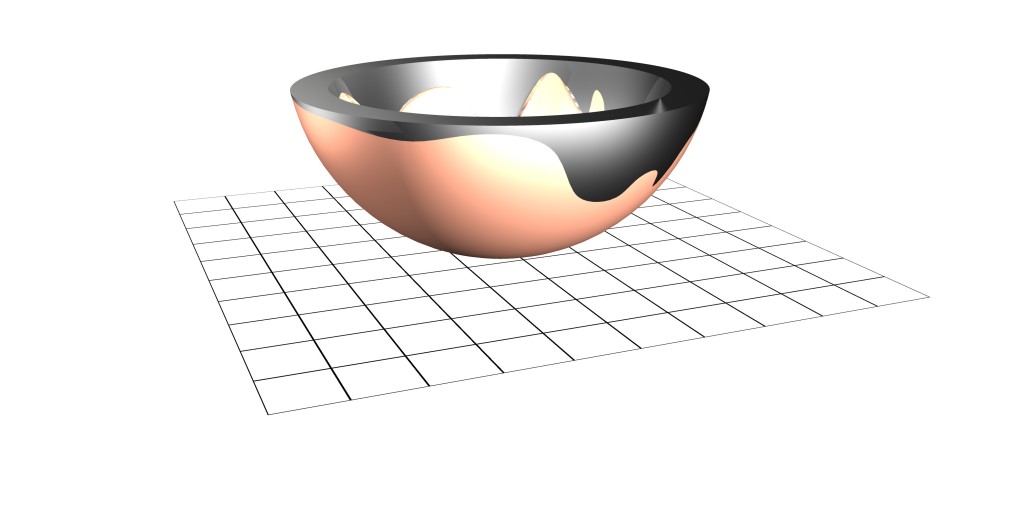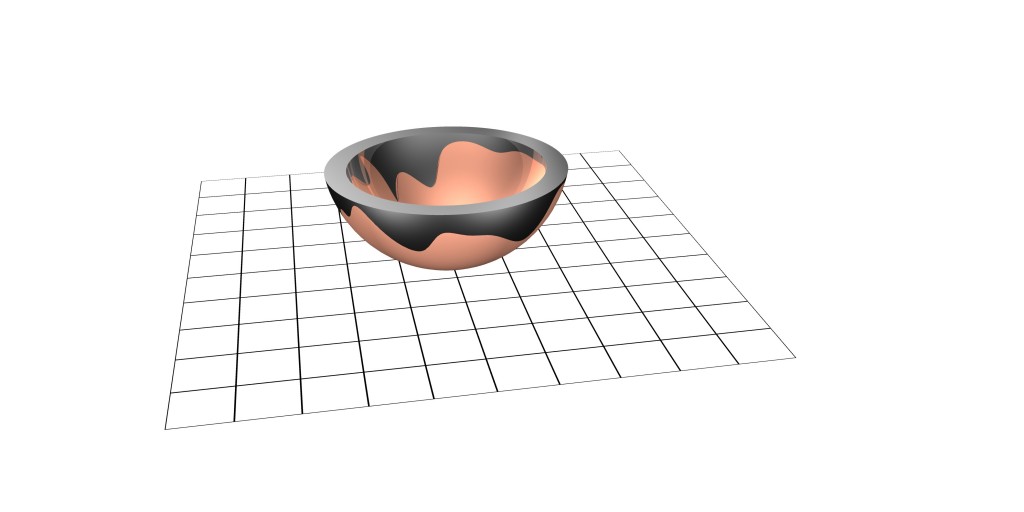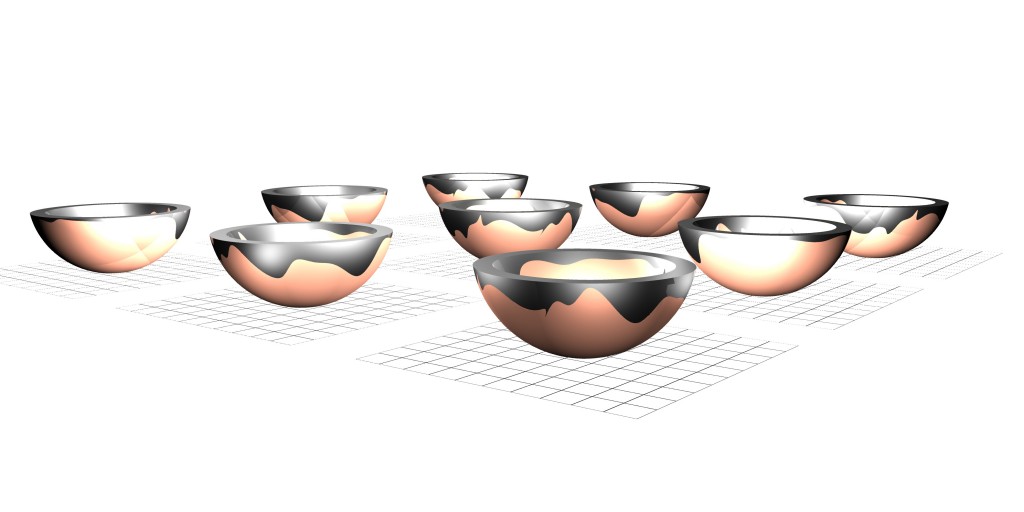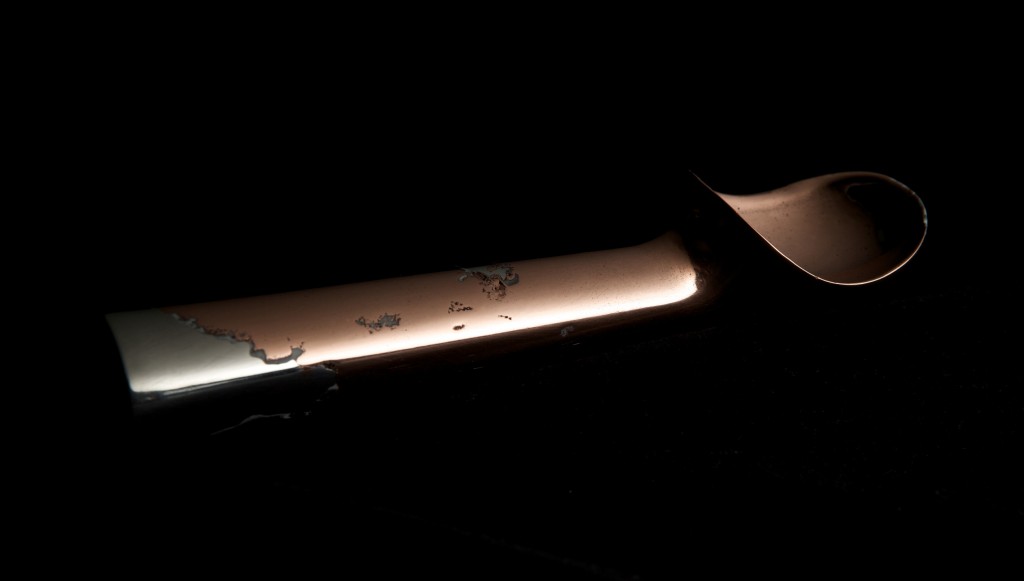Proposal for a Copper and Tin Vessel
The material properties of copper, its conductivity and its effects on other metals as an alloy, make it a core technological material of history and civilisation. Copper is very active metallurgically, and found in many organic and inorganic ecologies, and even in our blood, though direct sensory experience of such copper ecologies is rare. Typically, the day to day encounter with copper is in applications that are physically small, such as copper wiring or other electronic components. The era of tinkering and tin lined copper kitchenware is almost gone – the winding down of an ancient relationship begun in the alloys of the Bronze Age. This design combines cast pure copper and cast tin as married metals. Pure copper is a tricky, reactive metal when cast. It wants to spit and react with air, so imperfections and cavities can result. Such tendencies may be controlled in industrial practice with the use of a flux layer and other techniques, but in this proposal, as in my previous work Copper Ice Cream Scoops, the copper is imperfectly cast. The cast is then flipped and repaired with molten tin, poured in from the other side of the mould. This materiality, in the ancient, archetypal form of a vessel, expresses the active vibrancy of copper as a metal and its historical significance when alloyed with tin.
The computer drawings are only diagrammatic. The manufacturing process is generative and each vessel is unique. The display of multiple vessels makes this feature intuitive.
These processes were developed for my previous work Copper Ice Cream Scoops (2012), in which I reproduced the classic Zeroll style aluminium scoop in copper and tin by the lost wax method. The simpler shape of these vessels makes sand casting suitable.




